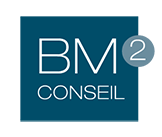Content
Setting these goals also helped the bank avoid the common pitfall of starting a transformation without focus, which can result in operating-model changes that increase IT complexity. Counterintuitively, setting high goals helped bank employees feel freer to test, learn, and think creatively to achieve their targets. Goals should be hard enough to promote outside-the-box thinking and present a challenge. If a team consistently meets every goal, more likely than not, the goals were not hard enough to start with.

To fill this gap, an organization often turns to a project manager. The project manager in a cloud team structure serves as the bridge between the project’s stakeholders and the technical team. Every operations team should have a goal of eliminating the need for people to open tickets with them, similar to how there cloud operations team structure should always be a goal to automate manual processes. A ticket requesting information is an indication that documentation should be improved. It is best to respond to the question by adding the requested information to the service’s FAQ or other user documentation and then directing the user to that document.
How to Build a Successful Cloud Migration Team
Often this looks like providing an “opinionated platform” on top of the cloud provider. Completely opening up a platform such as AWS for developers to freely use can be problematic for larger organizations because of cost and time inefficiencies. It also makes security and compliance teams’ jobs much more difficult. This can look like providing a Kubernetes cluster as a service with opinions around components like load balancing, logging, monitoring, deployments, and intra-service communication patterns.
- The alert should be categorized and annotated in some form of electronic alert journal so that trends may be discovered.
- An SRE model incorporates aspects of software engineering, such as capacity planning, and applies them to infrastructure problems.
- Ultimately, this gives your business new opportunities to scale its operations in an efficient manner.
- It’s the choice to step away from the total ownership and control of the local IT environment and embrace an uncertain partnership with third-party cloud and SaaS providers.
- Typically, automated processes include provisioning, user management, security management and API management.
A tools-only SRE team tends to focus on building software to help their developer counterparts measure, maintain, and improve system reliability or any other aspect of SRE work, such as capacity planning. At Google, Site Reliability Engineering is our practice of continually defining reliability goals, measuring those goals, and working to improve our services as needed. You can think of that guidance as what SRE teams generally do, paired with when the teams tend to perform these tasks given their maturity level. We believe that many companies can start and grow a new SRE team by following that guidance. The effective cloud infrastructure demands effective structure & organization to perform the different operations. It doesn’t need a massive endeavor to perform execution & cloud planning.
In other cases, department or division heads may be involved with cloud initiatives, decision-making, business policy development favoring the cloud and training. At the end of oncall and ticket duty shifts, it is common for the person to email out a shift report to the entire team. This report should mention any trends noticed and any advice or status information to be passed on to the next person. The oncall end-of-shift report should also include a log of which alerts were received and what was done in response. If oncall shifts are too long, the oncall person will be overloaded with follow- up work. If the shifts are too close together, there will not be time to complete the follow-up work.
How to Build an Effective Operations Team
This way we can make them more repeatable and scale their benefits rather than keeping them as one-off solutions. During Explore, VMware tried to convince customers to use its technology for building a multi-cloud architecture. One can pick a category of issues to focus on for a month or two, changing themes periodically or when the current theme is complete. For example, at the start of a theme, a number of security-related issues can be selected and everyone commit to focusing on them until they are complete. Some common themes include monitoring, a particular service or subservice, or automating a particular task.
Oftentimes, developers will want more control over infrastructure and operations, having come from the constraints of a more siloed organization. Not to mention, there are a lot of operational concerns that many developers are likely not even aware of—the sort of unsung, unglamorous bits of running software. A cloud security specialist sometimes oversees the architected infrastructure and software under development and ensure cloud accounts, resources, services and applications meet security standards.
They are also pieces most developers in a large organization are not well-equipped to—or interested in—dealing with. Patch management is a fundamental concern that often takes a back seat to feature development. Other examples of this include network configuration, certificate management, logging agents, intrusion detection, and SIEM. These are all important aspects of keeping the lights on and the company’s name out of the news headlines. Having a group that specializes in these shared operational concerns is vital. Business leaders can handle project management, but they may not possess the skills and IT background needed to organize and manage the technical aspects of a cloud project.
What is the difference between DevOps and CloudOps?
Security specialists also review activity logs, look for vulnerabilities, drive incident post-mortems and deliver recommendations for security improvements. A cloud engineer is primarily responsible for cloud implementation, monitoring and maintenance. They set up and operate the cloud infrastructure designed by the architects. This requires engineers to possess detailed knowledge of a cloud’s operation and be able to set up and configure resources, including servers, storage, networks and an array of cloud services. We’ve also observed software development to be an effective tool for balancing these approaches. Once they see the benefits that they can achieve by using that system, development teams are influenced to adopt the practices through the provided tooling.
Partners are trusted advisors to guide customers’ journeys to multi-cloud, enabling digital innovation with enterprise control. Empower your employees to be productive from anywhere, with secure, frictionless access to enterprise apps from any device. While multi-cloud accelerates digital transformation, it also introduces complexity and risk. Emergencies like power outages or emergency requests from other teams.
Benefits of an Experienced Cloud Migration Team for Your Organization
The benefit of having a specific person assigned to oncall duty at any given time is that it enables the rest of the team to remain focused on project work. Studies have found that the key to software developer productivity is to have long periods of uninterrupted time. That said, if a major crisis appears, the oncall person will pull people away from their projects to assist. Design infrastructure services as products, manage outcomes versus activities, and build an engineering-focused talent model.
This, of course, is a highly subjective question to which there is no “right” answer. This is doubly so considering that every company and culture is different. I can only humbly offer my opinion and answer with what I’ve seen work in the context of particular companies with particular cultures. More often than not, the cultural transformation is more arduous than the technology transformation.
Vijay Gurumurthy, Capgemini India on how to effectively manage multi account environment on cloud – ETCIO
Vijay Gurumurthy, Capgemini India on how to effectively manage multi account environment on cloud.
Posted: Sat, 12 Nov 2022 03:53:00 GMT [source]
We’ve since adopted a hybrid model, including the implementations listed below. Traditionally, IT teams have worked in silos and been a backbone of business, but they have not necessarily been decision makers or brought into the corporate planning process. As more processes move to digital, a cloud strategy is not just a nice-to-have; it is a must-have. Deciding what cloud technology to invest in, when to make the investment, planning software implementations, and more are all important points to consider.
See how we work with a global partner to help companies prepare for multi-cloud. Partners deliver outcomes with their expertise and VMware technology, creating exceptional value for our mutual customers. Increase app velocity and centrally manage, secure, connect, and govern your clusters no matter where they reside. Shift from supporting remote work to becoming an anywhere organization. Enable any employee to work from anywhere, anytime with seamless employee experiences.
Benefits of cloud operations
The first pillar, abstraction, decouples management from the underlying infrastructure so cloud machine instances, storage instances, security, network and governance can be managed through a single pane of glass. This centralized approach to management allows an administrator to use a single tool such as Apigee, for example, to manage applications and services running in the cloud. How you manage your cloud architecture will have a direct impact both positive and negative on your cloud environment. Avoid common pitfalls by enforcing the best practices and fuel the success of your cloud environment by establishing how to approach security, management, and governance. While a project manager isn’t necessarily a required team member, they can simplify and organize an otherwise complex series of tasks and projects.
68% of developers want to expand use of modern application frameworks, APIs and services. There will be times when team members need to deliver criticism, hold others accountable, and admit their own failures to reach goals. The most important lesson they can learn, though, is that https://globalcloudteam.com/ effective team performance isn’t always about hitting numbers. It’s about being agile enough to deal with missing them and confronting sensitive issues for the collective good of the team. Guess what helps reconnect those dots to keep everyone working toward the same goal?

The operations argument is better stability, risk management, and cost control. There’s also likely more potential for better consistency and throughput at an organization level. In some organizations, an existing corporate compliance officer, the project’s business leader or security specialists may take responsibility for compliance. Because security and compliance are so tightly aligned, compliance specialists work closely with the security team. All of these use cases involve a team of professional cloud software developers responsible for designing, coding, testing, tuning and scaling applications intended for cloud deployment.
Software developer
Many organizations struggle to manage their vast collection of AWS accounts, but Control Tower can help. You can outsource infrastructure management to a third party or you can get IT admins the VMware training they need to install, … While cloud providers are responsible for the security of the cloud, cloud users are responsible for security in the cloud. To fully realize the benefits of cloud, you’re going to need to create a structure that puts the right people in the right places. Technical debt is the accumulation of small unfinished amounts of work. By themselves, these bits and pieces are not urgent, but the accumulation of them starts to become a problem.
Keep in mind that your implementations of SRE can be different—this is not an exhaustive list. An SRE model incorporates aspects of software engineering, such as capacity planning, and applies them to infrastructure problems. The goal of this model is to enable scalability and improve the reliability of software systems.
Process improvement and automation is work inspired by the business desire for continuous improvement. Your SRE organization may follow the implementations in the order above. Another common path is to implement what’s described in “Before you begin,” then to staff a Kitchen Sink SRE team, but swap the order of Infrastructure with product/application when it is time to start a second SRE team. In this scenario, the result is two specialized product/application SRE teams. This makes sense when there is enough product/application breadth but little to no shared infrastructure between both teams, other than hosted solutions such as the ones provided by Google Cloud.

Laissez un commentaire